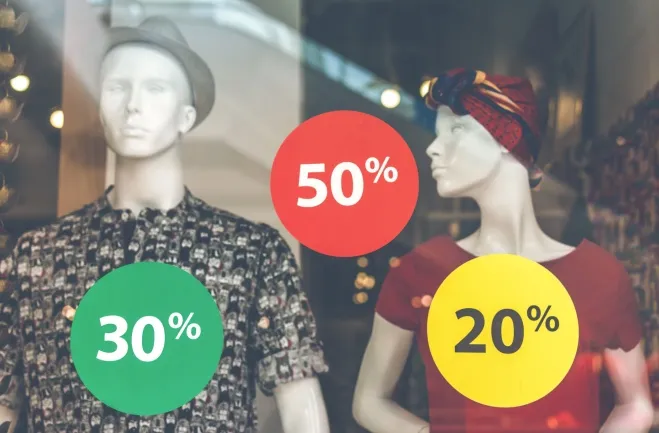Another 5-day shopping extravaganza affectionately termed “Black Friday Cyber Monday” or “BFCM” for short has come and gone. We’ve taken a look at the year’s culmination of planning and hope for some of the largest shopping days of the year, and have come up with a few observations on how BFCM played out on Amazon:
1. Amazon’s Differentiation is Diminishing
As deal’s were prevalent across all retailers during BFCM, the same basic products were all at the same price across the retailers. Amazon’s principles of Convenience, Selection, and Price that have made them the market leader were challenged in that in some cases, they were not the winner in all 3. Take the popular deal item Beats Solo3 Wireless Headphones that were on deal for $129.99, normally $199.99. Walmart, Amazon, and Target all had the basic colors and this item at the same price. Amazon (and Target) lacked the colorful selection you could find at Walmart – like the color Pop Blue. But, it was less convenient in that pick up was the only option for this item at Walmart instead of the ability to ship directly, helping Walmart’s financials. Target had a site-wide 20% off coupon when you spend $50+ which also offered further differentiation when price & items are the same. (Disclaimer, that coupon was not eligible on all items).
Take Away: Amazon’s presence on Prime Day had a lot more focus on celebrities, exclusives, and even unique product launches such as Lady Gaga’s new makeup line which made Amazon stand out. BFCM seems to be a much more generic, less interesting deal holiday with Amazon’s own products as the star.

2. The search vs. browse experience was biased towards brands with deals
During Black Friday and Cyber Monday, Amazon made a change to the way that customer searches were categorized and directed, based on the page where the customer began their search. If a customer began a search from the homepage, the search would show all results for that specific department. However, if a customer began a search from the Deals page (where most customers were led via widespread site merchandising), they would only be shown a limited selection of items that had an active Deal (excluding VPCs).

Search for ‘Coffee Maker’ from homepage (3,000+ results)

Search for ‘Coffee Maker’ from deals page (21 results)
This modified search experience excluded thousands of relevant ASINs from customers, and in some cases cut down on surfaced items by over 99%. It is our assumption that this new search strategy was employed by Amazon for two main reasons: 1) to improve the customer experience and provide a more curated assortment of deals, and 2) to incentivize brands to fund deals and receive prominent search placements as a result. Whatever the case, this new search and discovery path appears to have caused a noticeable decline in net paid search impressions, clicks, and sales volume for many large brands, beginning in the 2-3 days before Black Friday and continuing through Cyber Monday.
TAKE AWAY: Amazon is clearly trying to make it easier to find top deals, and is forcing brands to fully fund these deals (and thus, visibility) on the site during key drive periods. Going forward, brands will need to consider running Best Deals on their top items during Turkey 5 and Amazon’s ’12 Days of Deals’ if they want their items to be more easily discoverable in both organic and paid search.
3. Amazon increasingly focused on their own devices
It came as no surprise in 2019 that Amazon heavily promoted their devices, especially those that were Alexa-enabled. However, these devices received substantially more real estate on the Deals page vs. past events, and this real estate was more premium and higher up on the page.
This preferential site merchandising by Amazon caused many top deals to be pushed further down the page, forced off of the first page entirely, or harder to discover in general.
TAKE AWAY: In order to receive the most traffic and exposure on marquee days like Black Friday/Cyber Monday, brands should focus on a very small number of ‘doorbuster’ deals, with deep discounts on top-selling items. This will give brands the best chance of competing with Amazon devices for limited placements on the Deals page and will help drive total traffic and sales volume. For best results, brands should run these prime deals in conjunction with smaller Best Deals on other ‘tail’ ASINs, since an active deal appears to now be a prerequisite for appearing in searches during large savings events.

4. ‘Today’s Deals Live’ Was More Prominent
Amazon’s QVC-style live shopping channel ‘Today’s Deals Live’ has continued to take up a greater amount of ‘above-the-fold’ real estate and has begun to secure more recognizable brands with better deals. For this year’s Black Friday and Cyber Monday events, this placement took up almost 100% of the above-the-fold viewable screen on desktop. Many of our clients have reported strong sales lifts and ROIs associated with this premium placement, even given the (usually) sizeable investment.
These placements on ‘Today’s Deals Live’ have the ability to drive massive lifts in sales and move thousands of units in less than an hour. For deep discounts on top-selling items (especially those that appeal to a wide consumer base, like Smart TVs), these placements can be a huge driver of holiday sales. Given the fact that Amazon’s flywheel prioritizes sales unit volume and review count/quality, these placements could be a great way to improve organic sales rank, since they tend to drive large purchase quantities and subsequent customer reviews in a short period of time.
TAKE AWAY: Amazon will likely continue to move towards live programming and other interactive customer experiences that improve engagement and give top brands the premium exposure that they’re looking for. These placements can be a great way to boost both short-term and long-term sales, and should be considered for future holiday shopping seasons.

5. Amazon is Moving from Single-ASIN to Multi-ASIN Deals
In past years, Amazon has heavily promoted single-ASIN deals on top-selling products, i.e. Instant Pots. This approach has led to significant criticism from customers and brands alike, who believe that this strategy makes the site feel cluttered and too difficult to shop. During this year’s events, we noticed that many prominent deals on the first page were for entire brands or product categories, and led to merchandised landing pages vs. single-ASIN product detail pages.
This new approach made the Deals experience feel more curated for customers, but also caused many brands to complain that it made their items harder to find. These additional click-throughs also added a new barrier for customers, which our data shows has a negative impact on conversion rate and total sales volume. We expect Amazon to continue this practice for non-hero ASINs, since it allows them to promote more ASINs with the same amount of real estate on the Deals page.
TAKE AWAY: In order to stand out during crowded events like Black Friday and Cyber Monday, brands will need to take a ‘heads vs. tails’ approach to their catalog – deep discounts on popular hero ASINs, and a smaller discount on a wide array of products that can be featured in a curated landing page experience.
6. Black Friday was a Bust but Cyber Monday was the Bomb…in CPG (Consumer Packaged Goods)
In the consumables space on Amazon, Cyber Monday wore the crown as the top shopping day during the Turkey 5 weekend. While we did see a nice uptick in overall traffic and conversions during Black Friday compared to the time leading up to it, Cyber Monday outpaced Black Friday in all of the vital marketing metrics. Compared to Black Friday, total impressions on Cyber Monday were up nearly 20%. Clicks, ad spend, and ad sales were up over 25%. Orders on Cyber Monday were up nearly 35% compared to Black Friday! This also means that shoppers on Cyber Monday were converting at a higher rate.
TAKE AWAY: While brands should focus on Black Friday, they should view the entire 5-day shopping bonanza holistically. As shoppers replenish supplies in the post-Thanksgiving fog and gear up for further holiday shenanigans (read: having Cousin Eddie over for eggnog and cured ham), brands will want to ensure a strong presence on Cyber Monday to capture this drove of shoppers.













